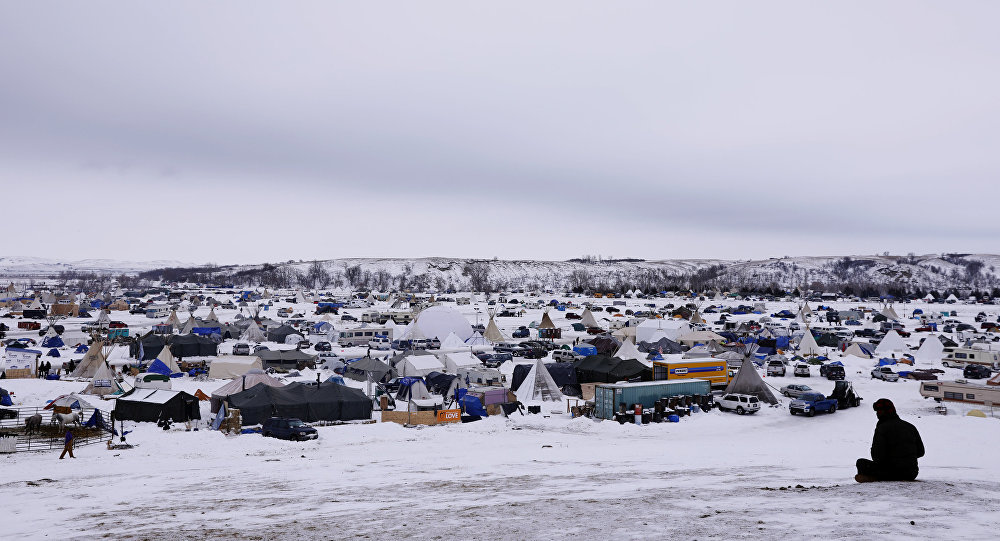The Army Corps of Engineers last week said protesters must leave the thousands-strong Oceti Sakowin campsite by December 5 or face trespassing charges, though it followed up the statement by stressing that it had no eviction plans.
Comment: We might wonder if the arrival of US military veterans to protect the protesters has anything to do with this sudden change of direction from law enforcement.
Protesters have camped for months near the proposed construction of the Dakota Access Pipeline in support of the Standing Rock Sioux, other tribes' and environmental activists' opposition to the 1,200 mile, $3.8 billion project. The Standing Rock Sioux say the pipeline, which has already been rerouted away from Bismark, North Dakota, due to environmental concerns, threatens their water sources and cultural heritage.
North Dakota's Morton County Sheriff's Department said in a statement late December 3 that following conversations with US Attorney General Loretta Lynch and with the organizers of the group Veterans Stand With Standing Rock (VSSR), they proposed relocating from the north side of the Backwater Bridge, the site of recent clashes between protesters and police.
"The question was asked if we would consider pulling back from the Backwater Bridge, and the answer is yes! We want this to de-escalate," said Cass County Sheriff Paul Laney.Law enforcement will leave the area no later than 4 p.m. December 4 if protesters agree to stay in the identified protest area, the main camp and south of Backwater Bridge, not on it; they agree to stay off the bridge unless they arrange a meeting with Morton County officials; they do not attempt to remove barriers or wires from the bridge; and they do not move north of a bridge in person or with drones.
Drones have been used recently to film clashes between law enforcement and protesters, documenting the use of hoses and rubber bullets against protesters over the past month.
Standing Rock Sioux Chairman Dave Archambault has been asking for the bridge barrier to be removed, saying it exists only to prevent people from accessing the camp easily, the Bismark Tribune reported December 3. He also announced that he has accepted North Dakota Governor Jack Dalrymple's invitation to meet to discuss the impasse, though a date for the meeting has not yet been set. Morton County Sheriff Kyle Kirchmeier also said it was time for the federal government to make a decision on the easement on federal lands the controversial pipeline needs for construction to continue.
"While I appreciate the attorney general taking the time to reach out to me, neither assistance for law enforcement nor a timeline for resolution was offered," Kirchmeier said. "I hope the dialogue continues, but it's time for more actions from the federal government, not more words."
Dallas-based Energy Transfer Partners, the owners of the pipeline, say they do not want to reroute it. Hundreds of veterans began arriving at the Standing Rock Sioux reservation over the past few days to offer themselves as human shields against law enforcement aggression.




Reader Comments
to our Newsletter